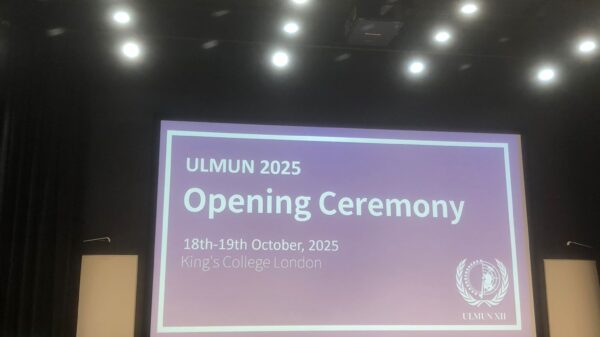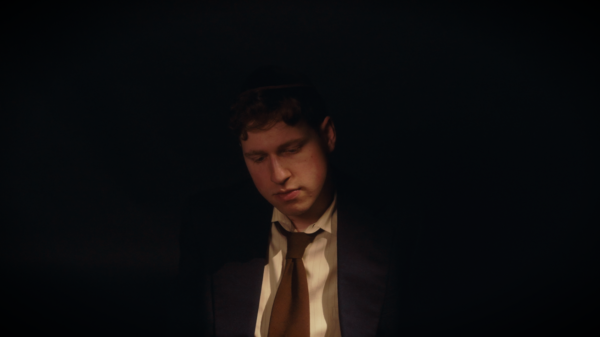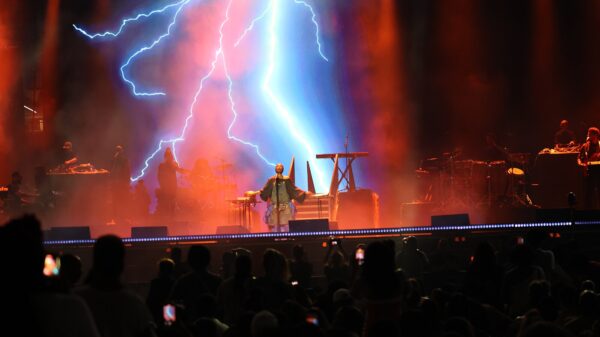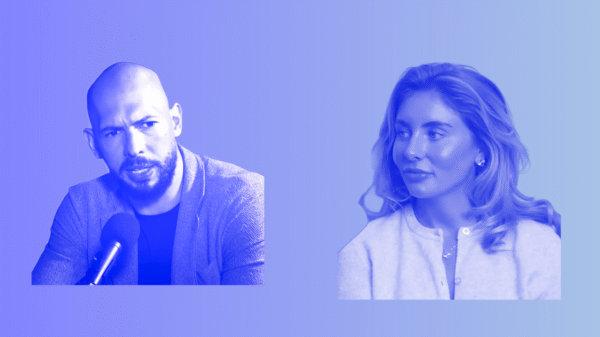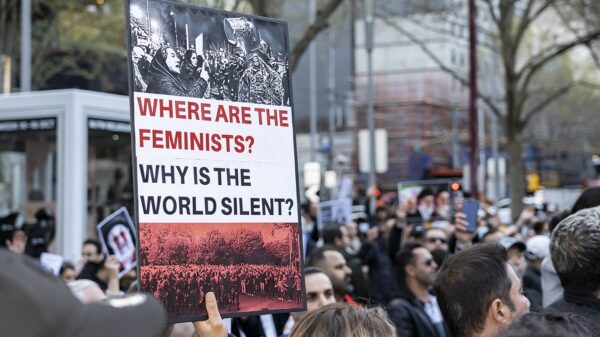Print Team Member Margo Sautelle takes a critical look at the hit Netflix series ‘Adolescence’, arguing for the need to condemn masculinity models normalising violence against women.
Thanks to Netflix’s ‘Adolescence’, toxic masculinity is making headlines again. The crime drama mini-series, released on March 13 on Netflix with over 96 million views since its premiere, has sparked much-needed conversations across genders and generations. Why now? What’s to learn from Jamie and Katie’s story?
‘Adolescence’ follows the 13-year-old Jamie Miller (Owen Cooper) accused of killing one of his peers at school, Katie Leonard (Emilia Holliday). Throughout four intricately crafted episodes, it delves into the consequences of incel culture, online misogyny and the wider impact of Jamie’s crime. Not only is this mini-series an astounding piece of cinema, with all episodes shot in only one take – it also explores these difficult societal themes in a uniquely impactful way.
Andrew Tate and the Manosphere
Violence against women and girls (VAWG) has increased dramatically in recent years, with no signs of improvement, due to increased misogynistic behaviour among teen boys and men. According to a recent National Policing Statement for England and Wales, ‘VAWG related crime rose by almost 40% between 2018 and 2023’, with a minimum of 1 in 12 women now victims every year. Many align this insidious surge in violent behaviour to the “self-proclaimed misogynist” and social media personna Andrew Tate, as well as other influencers who produce similarly harmful content. Tate, charged with rape and human trafficking in Romania and facing sexual assault allegations in Britain, is clearly a toxic role model for young men to turn to. As Jamie’s case shows, with social media platforms and curated algorithms, teen boys now have overwhelming access to such content and are therefore introduced to the manosphere – ‘a varied collection of websites, blogs, and online forums promoting masculinity, misogyny, and opposition to feminism‘ – from a very young age.
‘Adolescence’ sheds light on a particular community within the manosphere: involuntary celibates, or ‘incels’. Incel culture is a form of radical misogyny where men blame their lack of romantic and sexual relationships on women, resulting in a disillusionment that can quickly radicalise to violence. The series, however, effectively demonstrates that this isn’t just fringe rhetoric of the manosphere; these ideas seep into the everyday thinking of male teens, who are especially vulnerable to misogynistic ‘solutions’ during moments of self-doubt and insecurity: “I’m ugly… She just didn’t like me“. While in episode 3 Jamie denies being part of any incel group, this culture’s harmful influence on him is unmistakable. He admits feeling pressured, for instance, to have already engaged in sexual relationships with girls. In episode 2, when the series explores the incel-related meanings behind common emojis, it becomes clear how prevalent the manosphere is in boys’ lives, as it fails to be confined to a dark corner of the internet. The manosphere is now mainstream, fuelling young men like Jamie to turn towards violence.
‘But He Was Bullied…’ Is Still Not an Excuse
Interpretations of ‘Adolescence’’s overall message have caused controversial debate. Some have questioned Jamie’s culpability in the crime, whilst others have justified his actions due to Katie’s bullying. Stephen Graham, who plays Jamie’s father (Eddie Miller), as well as the co-creator and co-writer of the series, said on The Tonight Show that the series is not a “whodunnit… but more of a why”. From the first episode, along with Eddie and Jamie, we are forced to watch the harrowing CCTV footage of Jamie stabbing Katie to death in a carpark. Therefore, ‘Adolescence’ provides us with the evidence of Jamie’s crime; a more thought-provoking question is what pushed him to commit it.
A key element to this is how Jamie views Katie. In episode 3, Jamie confesses to the psychologist that he “could have touched any part of her body” but “didn’t” and that “most boys would’ve”, so he believes that makes him “better”. He understands that restraint earns him moral superiority, and this disturbing feeling of entitlement needs to be recognised. Jamie had no claim over Katie, to her validation or to her body. And yet given her rejection and hurtful online comments, he rationalised a violent revenge as acceptable: “I should’ve killed her, but I didn’t”. Bullying does not warrant a death sentence and it does not justify Jamie’s actions. Rather, his story should serve as a vital lesson in toxic masculinity: boys are being taught that respect towards girls and women is transactional, rather than fundamental. Young boys and men need to be educated properly, not excused, in order to put an end to the ‘VAWG epidemic’.
The Role of Parents and Schools
Jamie’s environment allowed such beliefs to fester unchecked. This is perhaps why a large portion of the series’ focus is accorded to the family and school: not only does it show the range of impact that Jamie’s crimes had, but it also likely suggests where to start with change.
So how can we prevent boys like Jamie from getting drawn into this world? Jack Throne, co-writer of the series, has recently called for urgent and “radical action” from the government, such as a “smartphone ban in schools” and a digital age of consent” on social media to prevent accessibility to harmful content. Sir Keir Starmer, who personally found ‘Adolescence’ “hard to watch” as a father, has welcomed an initiative by Netflix to “make the series available to screen for free in secondary schools” through Into Film+ school streaming service. The prime minister also plans to revisit the Online Safety Act, in case further measures could be put in place to protect young people.
It is clear that conversations need to be had and positive role models and alternatives for young men to identify with found. Jamie’s story brings focus to the importance of educating boys and preventing them from becoming perpetrators instead of the frequent obsessing over irrelevant details such as what the victim was wearing or how they were acting. Let us stop thinking that the ‘Jamies’ in our lives – our brothers, sons, classmates or friends – are exceptions. Toxic masculinity is rampant and we, as a society, need to dismantle these misogynistic ideologies for girls and women to stop paying the price.







